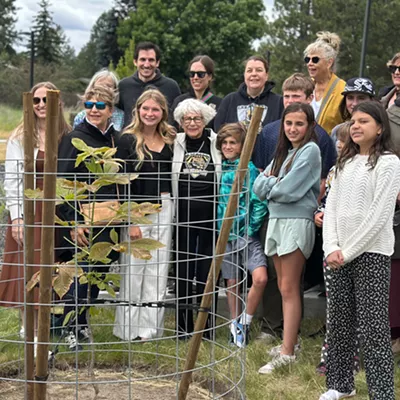The only quibble I have is with the commonly used term "halfway house." As it has been explained to us, that term REALLY refers to the community facilities that corrections people use to transition low risk (and only low risk) prison inmates back into society. Proposed zoning restrictions for these formally defined "halfway houses" are somewhat less than those for the much more secure, specifically defined "Secure Residential Treatment Facilities" that are designed for the high risk sex offenders that worry people so much.
The county's proposed zoning rules for secure community facilities like these set out criteria to specifically protect children. In addition they require that a hearing examiner be convinced that a facility's design and location protect the community's safety and welfare.
T'was a good article!
& & Tom Hargreaves -- Spokane County Planning Commission & & & &
Late last week the Regional Emergency Response Team placed the Pacific Northwest in a stage two power shortage warning. That warning was called off last week as temperatures around the region moderated.
We at Avista thank you, our customers, for your energy saving efforts and we praise the cooperation and leadership of regional agencies and utilities in helping to avert an energy shortfall.
But the cold season has just begun. Regional energy supplies continue to be stretched and our spirit of cooperation will be tested again. At Avista we're committed to meeting the energy needs of our 310,000 electrical customers and 180,000 natural gas customers. And we are redoubling our efforts to help customers learn more about conserving energy. We are also working to increase our power supply and decrease demand. We made it through this energy emergency warning with your assistance, but the winter has just begun.
Balancing the power supply for the Pacific Northwest will continue over the next several months. Energy conservation efforts by our customers and continued cooperation by the entire region will play a key role in the region's ability to keep up with energy demand.
& & Scott Morris -- President, Avista Utilities & & & &
A new year brings a chance for new beginnings, and many of us target January1, as a day for making personal resolutions to shed bad habits and better our lives. Unfortunately, the strong sense of resolve we feel on January 1, may begin to fade by January 2, leaving a feeling of disappointment in its wake.
In this age of instant technology, we may expect personal change to happen as quickly as changes to our favorite Web site. But New Year's resolutions are really personal evolutions, and evolution takes time! A perfect example of this is the resolution to quit using tobacco.
While giving up tobacco is an ideal resolution, it's often a long and difficult process. In fact, the average smoker attempts to quit seven times before finding success.
The good news is there's more help available this year to Washington residents who want to start tobacco-free lives. The Washington State Department of Health recently launched a statewide, toll-free Quit Line (1-877-270-STOP) to aid tobacco users with one-on-one cessation counseling and referrals. In only two months of operation, the line has already helped over 2,000 tobacco users start the quitting process.
It's important to note that tobacco is a physical and psychological addiction, and tobacco users must be ready to quit. If you use tobacco and you're ready to start the quitting process, here are some tips:
In the days leading up to quitting, educate yourself by researching the benefits of quitting.
Pay attention to cravings. Identify your tobacco triggers, the situations or emotions that encourage you to smoke or chew. Make plans for overcoming -- or avoiding -- these triggers.
Set a firm date. Pick a day to stop using tobacco and stick to it. To increase your chance of success, avoid picking a time that's typically high-stress.
Spread the word. Build a support network by telling friends and family you've decided to quit.
Make a clean start. Give your house, clothes and car a new beginning, too, with a thorough cleaning. This gets rid of tobacco smells that may tempt you when you quit.
Collect and toss. Search your house and car for anything related to tobacco use (cigarettes, lighters, ashtrays) and throw them away.
Get help. Don't go it alone, call our Quit Line and let our trained specialists help you find the resources you need. It's fast and it's free.
If you use tobacco, the decision to quit is one of the most important resolutions you will ever make. Remember, we're here to help!
& & Mary Selecky -- Washington State Secretary of Health & & & &
















